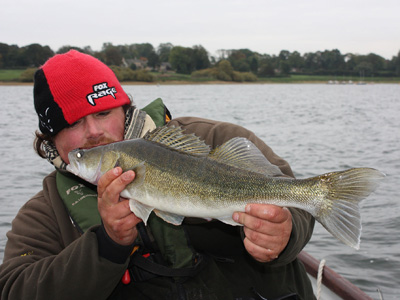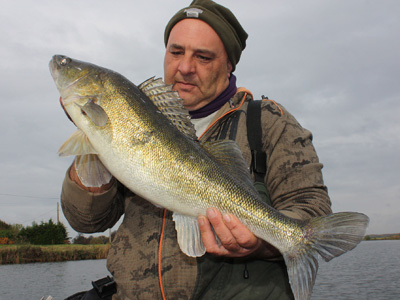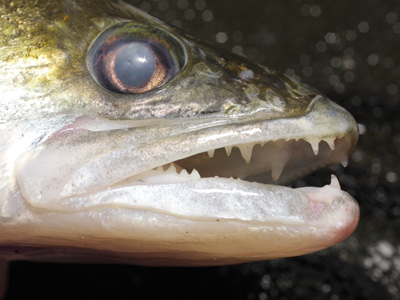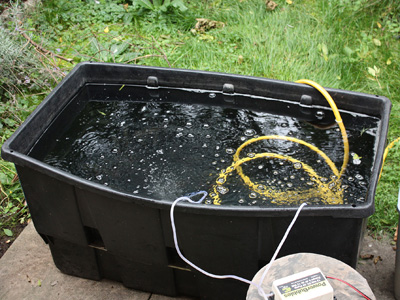In the first part of this series I looked at the type of gear that you should be using for zander fishing, in this second part I shall be looking at the baits and methods we employ when bait fishing for zander; lure fishing for them being a subject large enough to warrant a section of its own.
The greatest myth in zander angling?
 It is often written by anglers who ‘dabble’ with zandering that the best baits of all are tiny ones, either alive or dead, whole or in pieces. Whilst there’s a certain amount of logic to that thinking in that zander do not have as large a mouth as pike, or even perch by comparison, they are still a large apex predator and are quite capable of taking relatively large prey with ease.
It is often written by anglers who ‘dabble’ with zandering that the best baits of all are tiny ones, either alive or dead, whole or in pieces. Whilst there’s a certain amount of logic to that thinking in that zander do not have as large a mouth as pike, or even perch by comparison, they are still a large apex predator and are quite capable of taking relatively large prey with ease.
The largest bait that I ever caught a zander on was a roach of nearly a pound that I scooped out of the Relief Channel as it drifted down dead. The zander I caught on it weighed seven and a half pounds! You can catch zander on tiny baits it’s true, but you are stacking the odds of catching a big zander against you by doing so. Think about it. If you are using tiny baits then any zander that comes past is capable of taking it. Therefore the tiny schoolies will have either taken the bait, or damaged it excessively, before a big fish gets a look in.
Furthermore big fish have got that way by feeding in a manner that has meant that they either grew faster or longer than their brethren, which means the least amount of effort expended to gather their food. To put it basic terms if there are two zander and one feeds consistently on tiny bleak, having to chase each one down every time it wants a meal, whilst its partner feeds on 3oz roach all the time, which one is going to grow fastest? Therefore logic dictates that if you want to be successful at catching big zander the tiny bait route is not the one to go along.
 So having said all of the above, just what should we be using? Well I have already mentioned two ends of the bait spectrum, tiny baits and one pound roach. Now I would not advocate using huge great baits like that for many reasons, in exactly the same way that I wouldn’t advocate the use of tiny baits either, but there has to be a happy medium and to me that is a bait within the 2-8oz range and most crucially of all they should be alive.
So having said all of the above, just what should we be using? Well I have already mentioned two ends of the bait spectrum, tiny baits and one pound roach. Now I would not advocate using huge great baits like that for many reasons, in exactly the same way that I wouldn’t advocate the use of tiny baits either, but there has to be a happy medium and to me that is a bait within the 2-8oz range and most crucially of all they should be alive.
Alive, alive oh!
There is a place in zander angling for the use of deadbaits, and I will cover that shortly, but in my experience there is no bait at all to match a live one for zander. To answer why this should be the case you only need look at them carefully and it is easy to see that a zander is 100% built to catch and eat prey ‘on the hoof’. It has large front fins which, unlike other species, are located close to the front of the fish giving the zander great manoeuvrability to out move its prey. Its eyes are also better, and high on the head, giving the zander great vision that enables them to see better looking upwards or forwards than downwards.
 All in all the zander is a killing machine not a scavenging one, and given the choice, will go predominantly for a live prey over a dead one. Now there are times when deadbaits come into their own, particularly when the water is extremely coloured or when they are given movement in some way. Of course there are zander caught on deadbaits outside of those times, but in my experience deadbaits are inferior for the majority of the time. That said I will always have one rod out with a big deadbait just in case a big, lazy zander should happen along, but the times when it out fishes the livebait are few and far between.
All in all the zander is a killing machine not a scavenging one, and given the choice, will go predominantly for a live prey over a dead one. Now there are times when deadbaits come into their own, particularly when the water is extremely coloured or when they are given movement in some way. Of course there are zander caught on deadbaits outside of those times, but in my experience deadbaits are inferior for the majority of the time. That said I will always have one rod out with a big deadbait just in case a big, lazy zander should happen along, but the times when it out fishes the livebait are few and far between.
One thing that is true though for both types of bait is that you need to be using the best bait available to you. With a deadbait this means as fresh as possible. I usually use a bait caught at the venue, mainly casualties from the bait bucket, and only when I cannot get such will I resort to using frozen baits – and then only baits that I have frozen myself. I never, ever use shop bought coarse deads as in most instances I have found them to be not far from rotten when defrosted and virtually useless as zander baits. If I am using deads I will puncture the bait a bit to let out the body fluids and put some scent into the water and if the bait’s fresh enough I will cut the gill rakers up to get some blood flowing out into the water too.
Livebaits too need some looking after if you are going to get the best from them. In days gone by I used to catch my baits in advance and keep them in an aerated tank at home. However those days are sadly (and erroneously in my opinion) behind us now and we are forced to catching baits at the venue. However even with this there are ways and means of doing it correctly.
 First off I never use a keepnet as not only do they strip fish of all their slime, but they also do untold damage to baits as you drag the net in and out to get fresh baits when needed. Far better is to get a large bucket and invest in an aerator pump. The pump I use is a 12v model which I run off a small, sealed cell battery. This model really keeps the water well aerated and it’s fit, healthy fish that are either used for bait or returned at the end of the day. Also think about how you are going to use them when they are on the hooks as great long casts across the drains or rivers tend to kill them pretty quickly. Perhaps a bait boat or a different bait would be better in this situation? Livebaits are a key method in the zander angler’s armoury so why not make sure that you get the absolute maximum from them?
First off I never use a keepnet as not only do they strip fish of all their slime, but they also do untold damage to baits as you drag the net in and out to get fresh baits when needed. Far better is to get a large bucket and invest in an aerator pump. The pump I use is a 12v model which I run off a small, sealed cell battery. This model really keeps the water well aerated and it’s fit, healthy fish that are either used for bait or returned at the end of the day. Also think about how you are going to use them when they are on the hooks as great long casts across the drains or rivers tend to kill them pretty quickly. Perhaps a bait boat or a different bait would be better in this situation? Livebaits are a key method in the zander angler’s armoury so why not make sure that you get the absolute maximum from them?
In the next part I am going to go myth busting and look in depth at the fact and fiction of zander fishing and ,hopefully, stop you from going down a few roads that will lead you nowhere!











